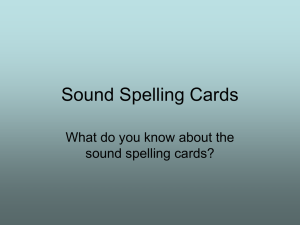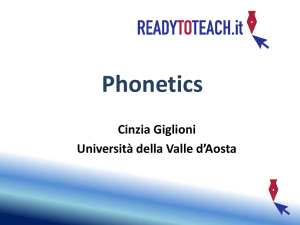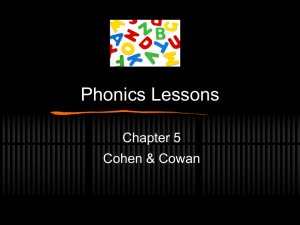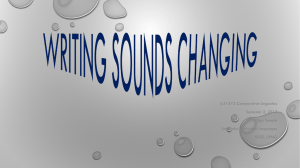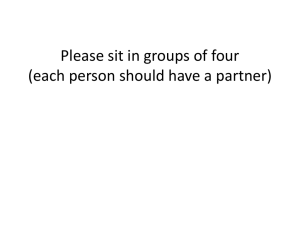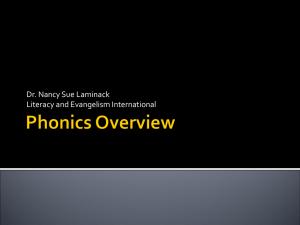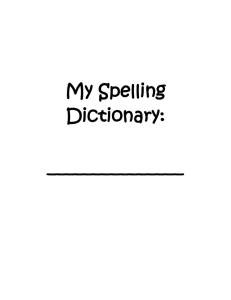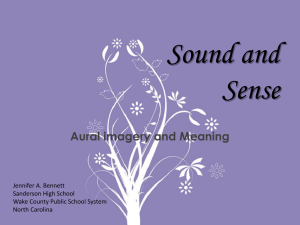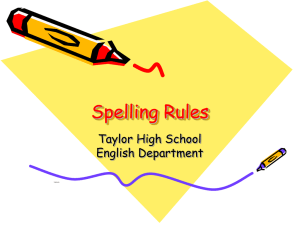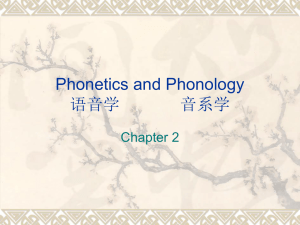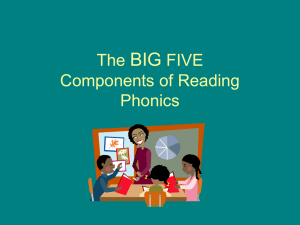Phonics Concepts - PBworks
advertisement
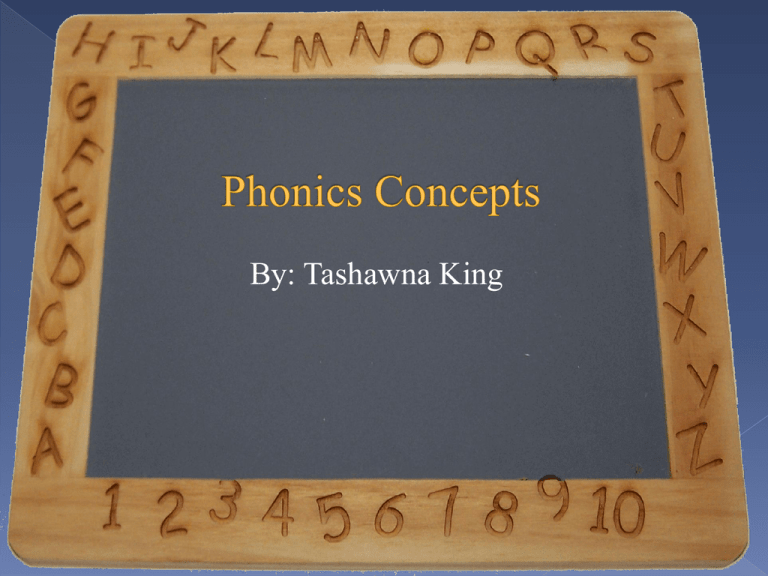
By: Tashawna King Phonics concepts include: consonants vowels blending sounds into words phonograms phonics rules Phonics is the key to reading because without phonics students would not be able to recognize words, spell, or be a successful reader. Phonics involves the association of phonemes, or sounds with written symbols, called graphemes. Phonics is the key to word recognition. When educators talk about phonics, they are referring method of teaching beginners to read and pronounce words by learning to associate letters or letter groups with the sounds they represent. Teachers teach the relationships between phonemes (the sounds that make up spoken words) and graphemes (the written representations of language) so that students can decode (sound out) words. Children must learn to break words down so that they can decode them in order to read; therefore, phonics is extremely important. Teachers have to teach children to learn the sounds of the English language. Teachers should remember to choose words that help children understand all of the 44 sounds. (19 vowel sounds including 5 long vowels, 5 short vowels, 3 diphthongs, 2 'oo' sounds, 4 'r' controlled vowel sounds and 25 consonant sounds). Vowels are five letters in the alphabet which are a, e, i, o, u, and sometimes w and y that represents a speech sound. Wand y are vowels when used in the middle and at the end of syllables and words. For example, the word day has the two phonemes, /d/ and /ā/, and a and y are vowels. Interestingly, y is not always a vowel; it is a consonant at the beginning of a word and a vowel at the end. The 2 most common vowels are short (marked with the symbol ̆, called a breve) and long sounds (marked with the symbol ¯, called macron). Teachers can show students the vowel letter and say the short vowel sound. For example, tell them "This is 'a' and it says /a/. Teachers can display pictures that begin with the short vowel sound. Pictures will help students remember the short vowel sound. For this sound, use pictures that begin with short "a" such as apple and ant. Once students understand the short "a" sound, show them other pictures that contain the short "a" sound such as hat, bat, and cat. Tape the pictures to the board, write the words underneath the pictures and underline the letter vowel to emphasize that sound. Teachers can display pictures that begin with the long vowel sound. Pictures will help students remember the long vowel sound. For this sound, use pictures that begin with long "a" such as acorn and apron. Once students understand the long "a" sound, show them other pictures that contain the short "a" sound such as snake, cake, and tape. Tape the pictures to the board, write the words underneath the pictures and underline the letter vowel to emphasize that sound. Two kinds of combination consonants are blends and digraphs. Consonant blends occur when two or three consonants appear next to each other in words and their individual sounds are "blended" together, as in grass, belt, and spring. Examples of consonant blends are the fr in frame, the cl in click, and the br in bread. Consonant digraphs are letter combinations representing single sounds that are not represented by either letter; the four most common are ch as in chair and each, sh as in shell and wish, th as in father and both, and wh as in while. Another consonant digraph is ph, as in photo and graph. Readers blend or combine sounds in order to decode words. Even though children may identify each sound, one by one, they must also be able to blend them into a word. For example, to read the short-vowel word best, children identify /b//ĕ/ /s/ /t/ and the combine them to form the word. For long-vowel words, children must identify the vowel pattern as well as the surrounding letters. In pancake , for example, children identify /p/ /ă/ /n/ /k/ /ā/ /k/ and recognize that the e at the end of the word is silent and marks the preceding vowel as long. A phonogram is a letter or group of letters that represent a single sound. One-syllable words and syllables in longer words can be divided into two parts, the onset and the rime: The onset is the consonant sound, if any, that precedes the vowel, and the rime is the vowel and any consonant sounds that follow it. For example, in show, “sh” is the onset and “ow” is the rime, and in ball, “b” is the onset and “all” is the rime. For “at” and “up,” their is no onset; the entire word is the rime. Research has shown that children make more errors decoding and spelling the rime than the onset and more errors on vowels than on consonants (Caldwell & Leslie 2005). In fact, rimes may provide an important key to word identification. Brought to you by Tashawna King
